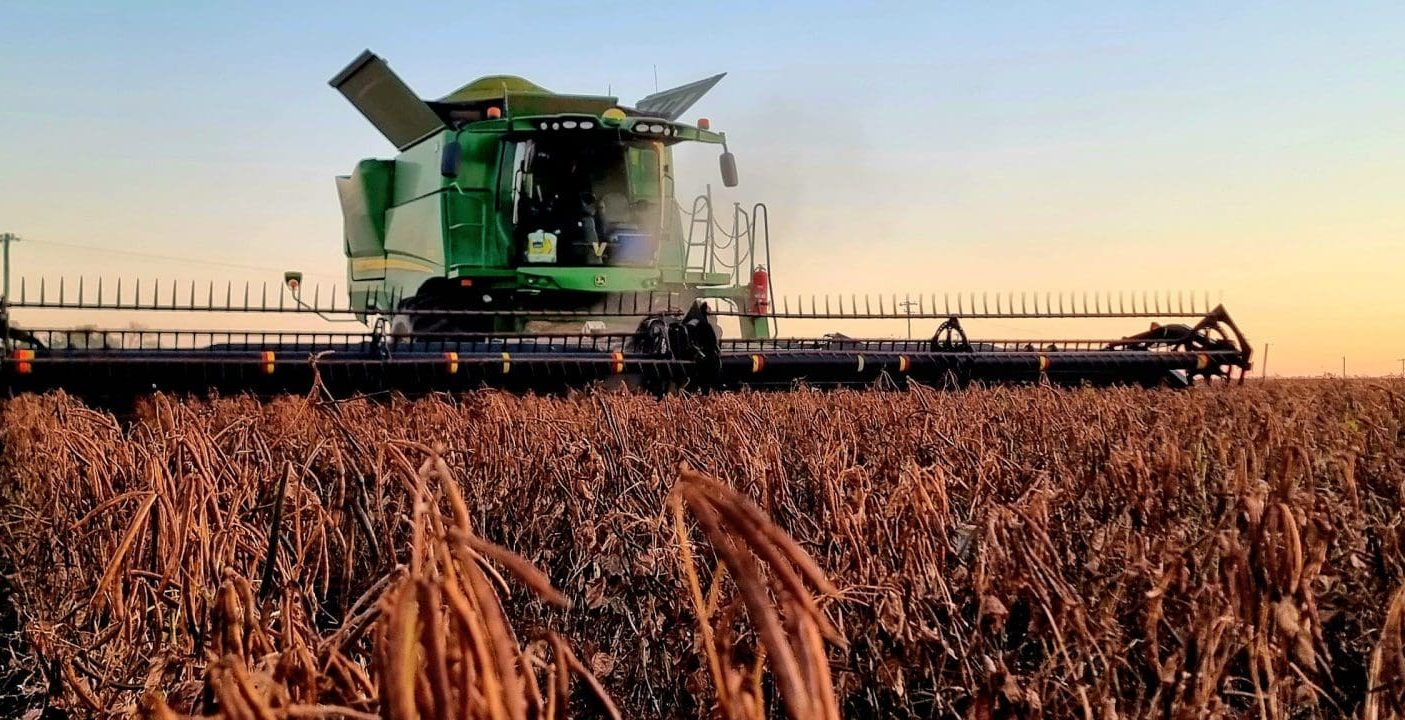
Mungbean harvesting at Emerald. Photo: Renee Anderson
CENTRAL Queensland growers are busy wrapping up sorghum and mungbean harvests as winter-crop planting accelerates across the region.
Chickpeas are expected to remain as the dominant winter crop in CQ, projected to account for more than 80 percent of plantings on the back of strong prices and good soil moisture.
Rainfall recorded on Friday and over the weekend is expected to stall progress on the sorghum harvest, which is around 60pc complete.
These falls included 21mm at Emerald, 59mm at Clermont, 14mm at Peakvale, and 39mm at Biloela.
Emerald-based Nutrien Ag Solutions agronomist James Sinnamon said the falls were expected to impact access to paddocks but not cause quality issues.
He said sorghum crops had a “pretty good year” overall with well-timed rain supporting growth and yields.
“There was some quite good rain during the growing season which helped it along,” Mr Sinnamon said.
“A lot of the crops really didn’t have much of an excuse not to perform.”
He said there were dry spells in December, which would have limited early-planted crops, but “most of the crops we had were planted in January and a lot of the moisture was capitalised on”.
Mr Sinnamon said the majority of the mungbean crop had been harvested, with the best results coming from those crops that could take advantage of the January rainfall.
“There was a bean pod borer problem early in the season, but they haven’t had too many issues from then on.”
Emerald grain grower Renee Anderson has just finished harvesting dryland mungbeans.
She said average yields were slightly disappointing at 1.5 tonnes per hectare, with some losses due to a month of light rain that delayed harvest.
“When we were about to start harvest, we got a month of rain on it,” Ms Anderson said.
“It didn’t impact quality but…delayed harvest by four weeks.”
She said some pod-setting occurred before harvest, which likely caused the “loss of some pods”.
Chickpea interest high
Ms Anderson said they were also preparing to plant chickpeas, with the crop expected to replace wheat on some paddocks.
She said there were already chickpeas emerging in her area.
“We’ve been turning cotton country into chickpeas, so we are probably a bit later than some of the other guys.”
At Biloela, grain grower Scott Muller planned to plant “the usual trifecta” of wheat, barley, and chickpeas this season.
With his sorghum and mungbean harvest complete, Mr Muller said his attention had now turned to the winter crop.
“We’ve just finished planting the last of the wheat and we’ve got peas that are out of the ground and wheat and barley that are doing their thing,” Mr Muller said.
He said parts of his chickpea crop had already received a well-timed shower, which he hoped would set it up for a strong finish.
Mr Sinnamon said he expected the region to plant the same area “if not more” to chickpeas this year.
“The prices are pretty good and pretty irresistible.
“You really can’t go past it…it’s a no-brainer with a full profile of moisture.”
He said there was some wheat going in “just purely for rotational purposes more than anything”.
Irrigation allocation suits chickpeas
For irrigation growers, the potential rise in chickpea area could point to concerns over water allocations for the next year, beginning on July 1.
Ms Anderson said she opted for chickpeas as they didn’t “have the irrigation water for wheat this year”.
She said the dam in her region was currently at about 30pc capacity.
“We have water allocation for this season which ends at the end of June, and we have none for next season.
“Chickpeas really only needs one irrigation, so we have enough water to do the chickpeas.
“The wheat would normally do two or three irrigations, and we don’t have enough water for that.”
She said without good spring rainfall, there would be a substantial drop in irrigated summer crops.
Mr Sinnamon said the water allocations for next season were “the main concern for growers” especially for cotton.
“Everybody is concerned, but it’s out of our control and we can’t make it rain.”

HAVE YOUR SAY